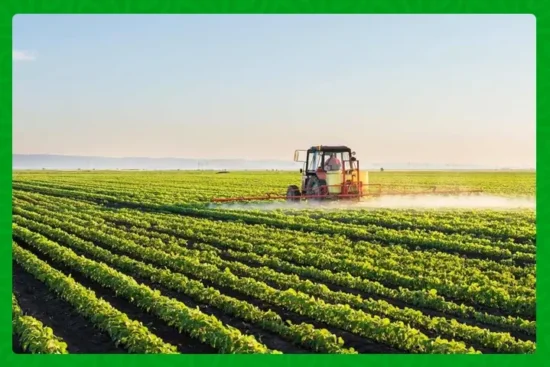
Step 1: Understanding Common Pests and Diseases Before delving into the specifics, it is crucial to familiarize yourself with the common pests and diseases that can affect wheat crops. Some of the most prevalent include:
Pests:
- Aphids
- Armyworms
- Hessian flies
- Wheat stem sawflies
- Wireworms
Diseases:
- Fusarium head blight (scab)
- Wheat rust (stem rust, leaf rust, stripe rust)
- Powdery mildew
- Septoria leaf blotch
- Tan spot
Step 2: Identifying Symptoms To effectively manage pests and diseases, it is essential to identify the symptoms early on. Familiarize yourself with the signs that indicate the presence of pests or diseases, such as yellowing leaves, stunted growth, lesions, discoloration, or distorted grain heads. Consult local agricultural extension services or experts to help you accurately identify the specific issues affecting your wheat crop.
Step 3: Prevention and Cultural Practices Implementing preventive measures and cultural practices can significantly reduce the incidence and severity of pests and diseases. Here are some key strategies:
- Crop Rotation: Rotate wheat with non-host crops to disrupt pest and disease life cycles.
- Seed Selection: Opt for disease-resistant or tolerant wheat varieties.
- Proper Planting Time: Plant wheat at the appropriate time to avoid susceptibility to specific pests or diseases.
- Field Sanitation: Remove crop residues, weeds, and volunteer plants to reduce the carryover of pests and diseases.
- Fertilization and Irrigation: Ensure proper nutrient management and irrigation practices to promote healthy plant growth and resilience.
Step 4: Integrated Pest Management (IPM) Adopting an Integrated Pest Management approach is crucial for effective pest control. IPM involves combining multiple strategies, including biological control, cultural practices, and targeted pesticide use. Here are some IPM techniques to consider:
- Biological Control: Encourage natural predators and beneficial insects that prey on pests.
- Trap Crops: Plant specific crops near wheat fields to attract pests away from the main crop.
- Monitoring: Regularly scout and monitor fields for pest populations to determine intervention thresholds.
- Pesticide Use: If necessary, choose targeted pesticides that are effective against specific pests while minimizing harm to beneficial insects and the environment. Follow all safety instructions and local regulations.
Step 5: Disease Management Managing wheat diseases requires a combination of preventive and curative measures. Here are some disease management strategies to consider:
- Crop Rotation: Rotate wheat with non-host crops to break disease cycles.
- Resistant Varieties: Plant disease-resistant wheat varieties whenever possible.
- Fungicide Application: When disease pressure is high, timely application of appropriate fungicides may be necessary. Consult local guidelines and recommendations.
- Sanitation: Remove and destroy infected plant material to prevent disease spread.
- Proper Water Management: Avoid excessive irrigation, as it can create conditions favorable for disease development.
Step 6: Regular Monitoring and Record-Keeping Continuously monitor your wheat crop for any signs of pests or diseases throughout the growing season. Keep detailed records of pest and disease incidence, intervention strategies, and their effectiveness. This information will help you make informed decisions for future planting seasons.
Step 7: Seek Expert Advice If you encounter persistent or severe pest or disease issues, don’t hesitate to seek advice from local agricultural extension services, agronomists, or experienced farmers. They can provide specific guidance tailored to your region and offer recommendations for effective management strategies.
By following this comprehensive guide, you’ll be better equipped to identify, prevent, and manage pests and diseases that can impact your wheat farming operations, ultimately leading to healthier and more productive crops.
Stay updated with the latest farming tips and agriculture industry news from Africa by subscribing to our newsletter. Don’t miss out on valuable insights and updates. Follow us on Twitter, LinkedIn, and Facebook to join our farming community and stay connected with us.



















